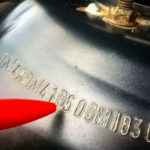The total value of these additional resistances lies widely and accurate preliminary calculations, “obviously, it cannot be expressed. In separate examples, the total strength of all devices installed for the movement gives a 5 – 8 -time supply against the traction power calculated by friction. With very careful implementation of all preparatory work, force, actually required for movement, sometimes even less theoretically calculated and is only 1.5 – 2 °/0 from the weight of the building.
The thoroughness of the implementation of all auxiliary structures should be a prerequisite for the work of work.
When moving the building along the inclined path, the theoretical value of the traction force is determined from the equation:
Horizontal movements. Both existing methods of application to the subject of horizontal force – pushing and attracting – in the practice of moving buildings are used almost equivalently.
The pushing method is carried out using hydraulic or screw jacks with a high block.
The jack of the jack is usually a railway, to which the jack is attached through the supporting beam.
The horizontal force of moving adaptations both during pushing and with attracting is always attached to the elements of the frame, mainly to running beams.
The disadvantage of the use of jacks is the need for their, a chat perch, t. e. The intermittence of movement. The advantage is a more uniform course of the building.
The disadvantage of attracting is the elasticity of the cables (accumulation of potential energy), which determines the appearance of jerks when moving the building from the place.
Attraction is carried out through the through the police and cables.
The location of the blocks of police plants is used or group (blocks in the clip), such as this is shown on the FOT. 489 and 506, or with separate mounting blocks (507). The quantity and carrying capacity of the winches and the number of blocks are determined by the calculation and atmosphere of work. Usually winches are used with a carrying capacity of 10 – 20 at five – and six -block polispasts and a steel cable with a diameter of 12 to 40 mm.






